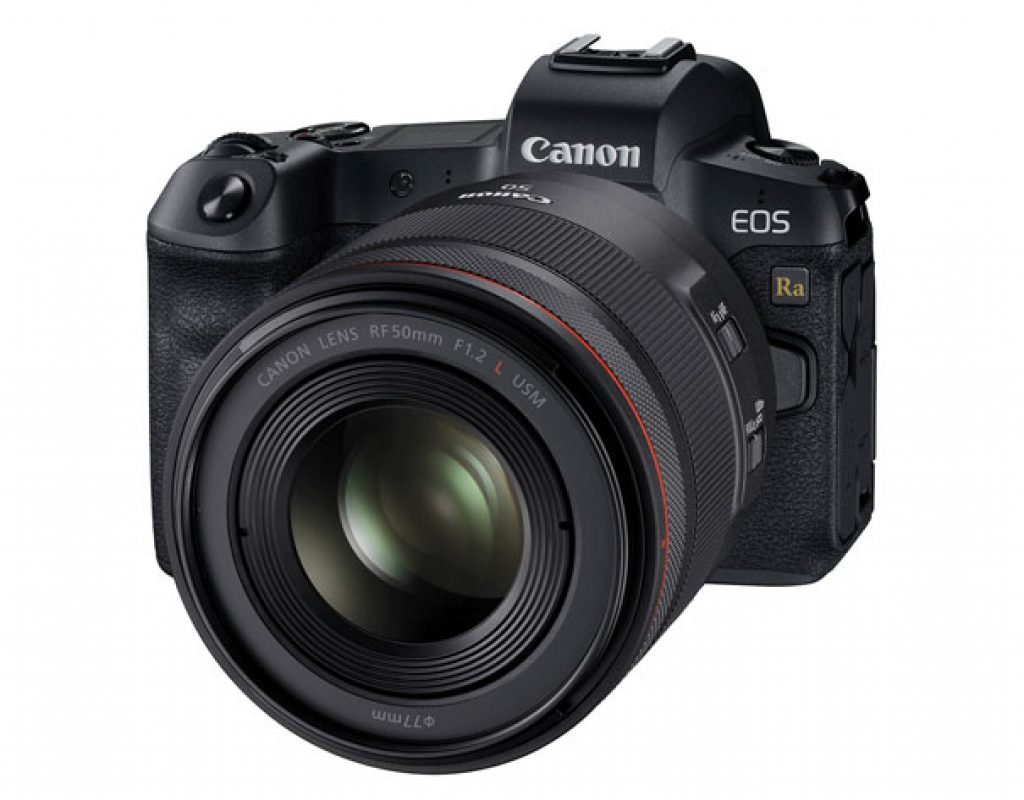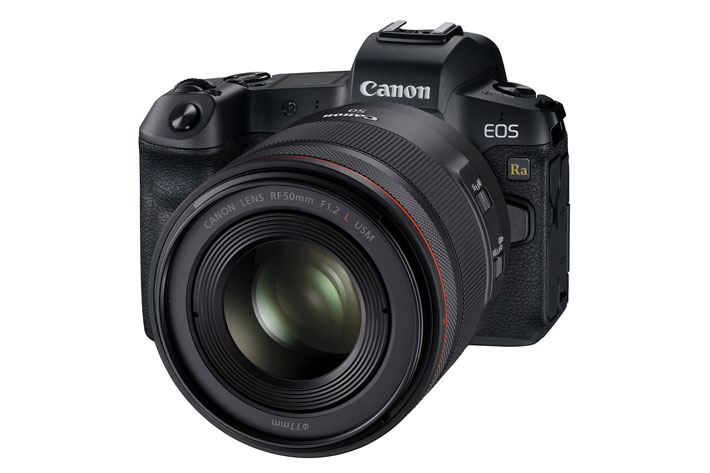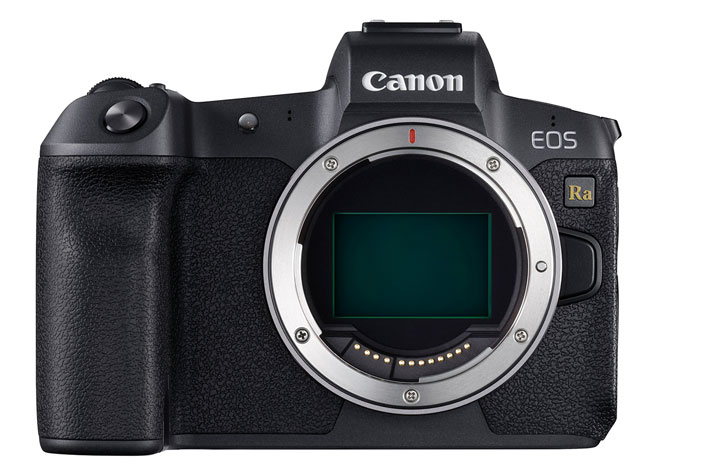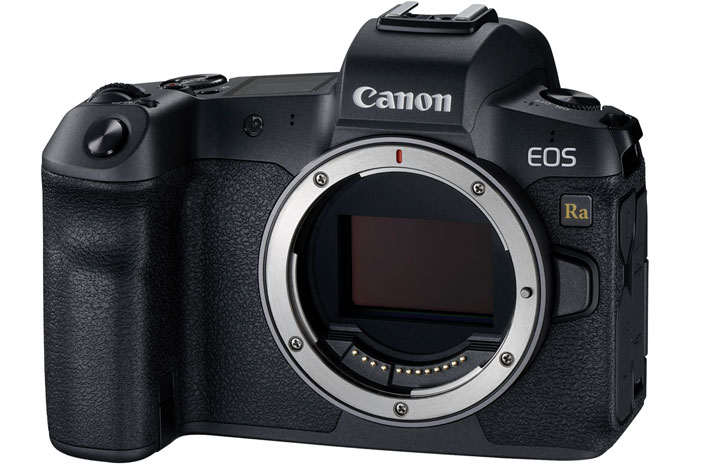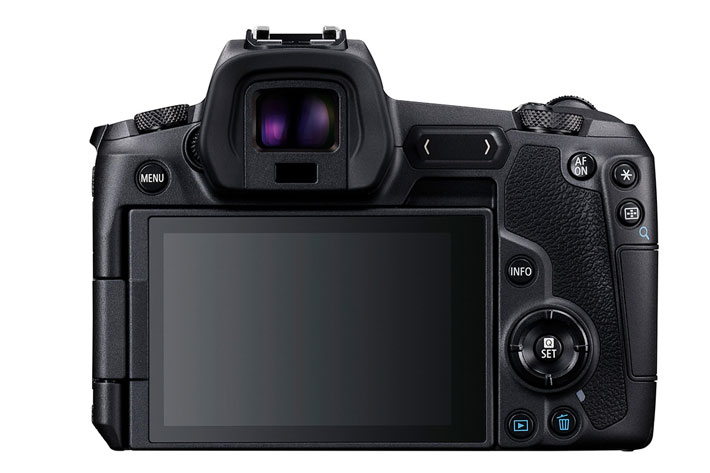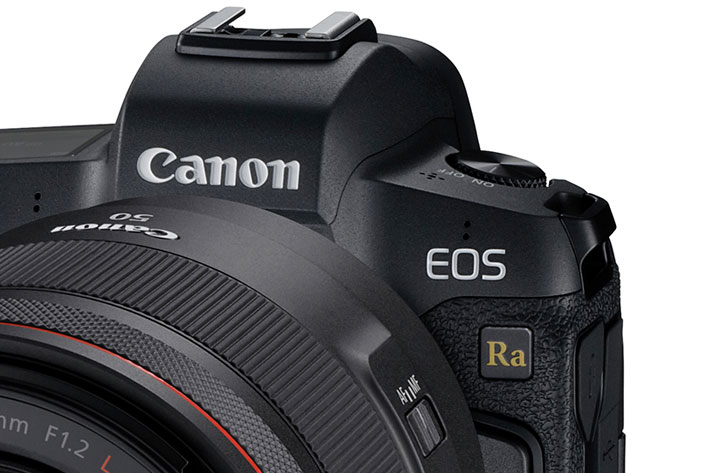
The EOS Ra is Canon’s first full frame mirrorless camera for astronomical photography, a camera based on the EOS R but adapted to capture the unique colour of deep space and constellations.
In the words of poet Quintus Ennius, “No one regards what is before his or her feet; we all gaze at the stars.” Helping to gaze and capture the beauty of the stars and beyond, Canon announced the company’s first full-frame mirrorless camera for astrophotography, the EOS Ra. Built off the EOS R system the new camera combines new features, such as four times greater transmittance of hydrogen-alpha (Hα) light of 656.3 nm compared to the original EOS R, launched in September 2018. For astrophotographers and hobbyists who enjoy capturing the detailed splendor of the night sky, the new EOS Ra will be an ideal camera to shoot with.
Canon’s passion for astro photography has led the company to create other models, within their DSLR family, now it is the time for mirrorless to get a camera designed to shoot the stars. “As a group of photographers who are passionate about capturing what we can’t see with our naked eyes, the new EOS Ra is designed for astrophotographers looking to capture vivid imagery of the night sky.” said Kazuto Ogawa, president and chief operating officer, Canon U.S.A., Inc.
The EOS Ra inherits the EOS R’s fastest autofocus in the world , the ability to focus in light conditions as low as -6EV , a 35mm full frame CMOS sensor with approximately 30.3 million effective pixels and a DIGIC 8 image processor. While boasting this advanced and cutting-edge optical technology, EOS Ra is a modified EOS model developed in direct response to the specific needs of astrophotographers looking to capture the unique colour of deep space and constellations.
DSLRs do not vibrate, just move the mirror up
Featuring a new infrared blocking filter (IR filter) allowing even higher hydrogen alpha (Hα) light to reach the imaging sensor, the EOS Ra allows photographers to effortlessly capture, crisply and clearly, the distinct red colour of nebula – an interstellar cloud of dust made up mostly of hydrogen and helium – impossible to capture on a traditional camera where the UV/IR cut filters block the IR light that gives these nebulae their red colour.
With its mirrorless design and full frame sensor, EOS Ra is an ideal camera choice for photographers looking to capture stunning images of deep space. With no mechanical mirror system, vibrations are minimized making sure images are sharp, says Canon, forgetting that with DSLRs and SLRs one would always move the mirror up before the exposure, and most modern models allowed for the camera to settle for a few seconds before exposing the film or sensor. So, no vibration too…
Cropping to APS-C
Still, there is no doubt the EOS Ra promises good results. Its high performing Canon-developed sensor offers a mix of high ISO performance, high resolution, fast readout and exposure latitude, ensuring interstellar images are of unprecedented quality. As with all its products, Canon’s heritage in optical excellence runs true in the EOS Ra – unlike some cameras with non-Canon-developed sensors – all 30.3 million of the camera’s pixels are used – meaning no pixels are missed which could result in areas not being captured and stars lost. However, should a connected telescope eyepiece not cover the full image area of the sensor, the EOS Ra also allows the image area to be cropped to an APS-C area of approx. 11,6 MP (4176×2784) or several other crop ratios.
With Dual Pixel CMOS Auto Focus (AF), the EOS Ra features a range of AF and MF focus functions ensuring images are of unparalleled optical excellence – including when captured in low light conditions. Retaining the -6EV AF from the EOS R, low light performance with RF lenses and existing EF lenses is possible. When used with a telescope, focus assist functions like focus peaking and magnification up to 30x – that’s three times more than the EOS R – astrophotographers can be sure that focusing with any optical device is simple and quick.
4K movie and time-lapse
With its 4K movie and 4K time-lapse capabilities the EOS Ra is also the first astro camera on the market with a 4K movie function, so it will be interesting to see what users will be able to create with this new model, made to “shoot for the stars”.
Sharing the same mount as the EOS R, the EOS Ra has been designed to maximise lens design possibilities. The RF lens mount enables a radical new optical design – the 20mm flange back and wide 54mm mount diameter has made it possible for Canon engineers to design new lenses that weren’t achievable before. With lenses remaining at the foundation of the EOS System the camera, and system, is also compatible with three lens mount adapters, photographers have a wide choice of lenses and telescopes to use with EOS Ra. More than 70 EF and EF-S lenses can be used with Canon’s innovative EOS R System, adding new functionality to existing optics, while maintaining the excellent levels of performance and functionality previously seen with EOS DSLRs . As when attached to an EOS R, the Canon mount adapter enable users to maintain their setup whether using RF or EF and EF-S mount lenses.
Available in December 2019
EOS Ra’s compact and lightweight design makes the camera easier to attach to a telescope – perfect for photographers shooting for long periods of time. Combining existing EOS ergonomics with new controls the camera provides maximum control with familiarity. Such features include a Vari-Angle touch screen, which also makes the camera comfortable for photographers shooting in any position with the benefit of having up to 30x magnification to check focus. The EOS Ra’s Electronic Viewfinder means photographers can really shoot what they see with the ability to view their subjects clearly in the dark.
EOS Ra, like the EOS R, supports connection via EOS Utility and the Canon Camera Connect application. This allows remote camera control for still and video via USB or via wireless. The software can be downloaded free of charge from the Canon support website. Such feature enables remote shooting, for example indoors on a cold evening, and time lapse operation.
The camera’s Bluetooth and Wi-Fi capabilities make connection to a smartphone and transferring of images and video simple. This connection also allows for remote control of the camera from a smartphone or tablet. In addition to this, accurate GPS data from your smartphone can be added to images for extra clarity of their capture location.
The Canon EOS Ra full-frame mirrorless camera is scheduled to be available in mid-December 2019 for an estimated retail price of $2,499.00 for the body only.

Filmtools
Filmmakers go-to destination for pre-production, production & post production equipment!
Shop Now